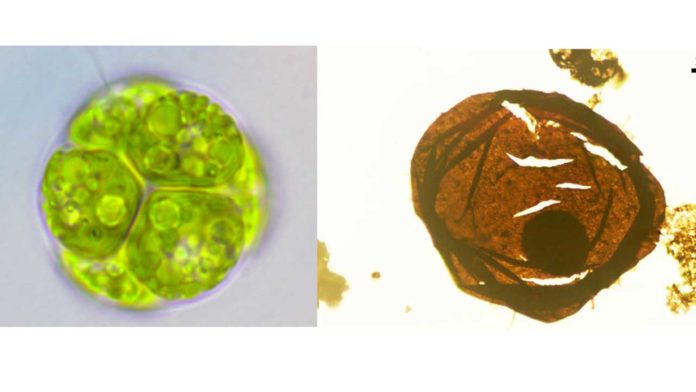A new study has just shown that the organelles (nuclei, chloroplasts, and pyrenoids) found within chloroplasts can persist for weeks and months after cell death in eukaryote cells, sufficiently long to be saved as fossils. They characterized the transformation of the organelles into something resembling snot.
Emily Carlisle, a Ph.D. student from Bristol’s School of Earth Sciences and co-author, said, “I spent several weeks photographing algal cells as they decayed, checking the condition of the nuclei, chloroplasts, and pyrenoids. From this, we could tell that these organelles don’t decay immediately after cell death but take many weeks to dissolve.”
When complex life emerged has proved challenging to say. Past studies had suggested that eukaryote cells might have evolved anywhere from 800 million to 1,800 million years ago, an imprecise range that needs fossils to narrow it down.
Professor Phil Donoghue, an expert in molecular palaeobiology and one of the co-authors of the study, said, “The evolution of eukaryotes was a hugely important event in the history of life on Earth, but fossils of these cells are difficult to interpret. Some of them have structures that could be organelles, but there’s long been this assumption that organelles cannot be preserved because they would decay too quickly.”
Dr. John Cunningham, a Bristol co-author, said, “The results of these experiments shed light on the controversial fossils of early complex life that include structures within the cells. The structures in Shuiyousphaeridium, a fossil from 1,700 million years ago, closely resemble nuclei. This interpretation has previously been dismissed because of the assumed rapid decay of nuclei. Our decay experiments have shown that nuclei can persist for several weeks, meaning the structures in Shuiyousphaeridium are likely to be nuclei.”
Journal Reference:
- Emily M. Carlisle, Melina Jobbins, Vanisa Pankhania, John A. Cunningham, Philip C. J. Donoghue. Experimental taphonomy of organelles and the fossil record of early eukaryote evolution. Science Advances, 2021; 7 (5): eabe9487 DOI: 10.1126/sciadv.abe9487
